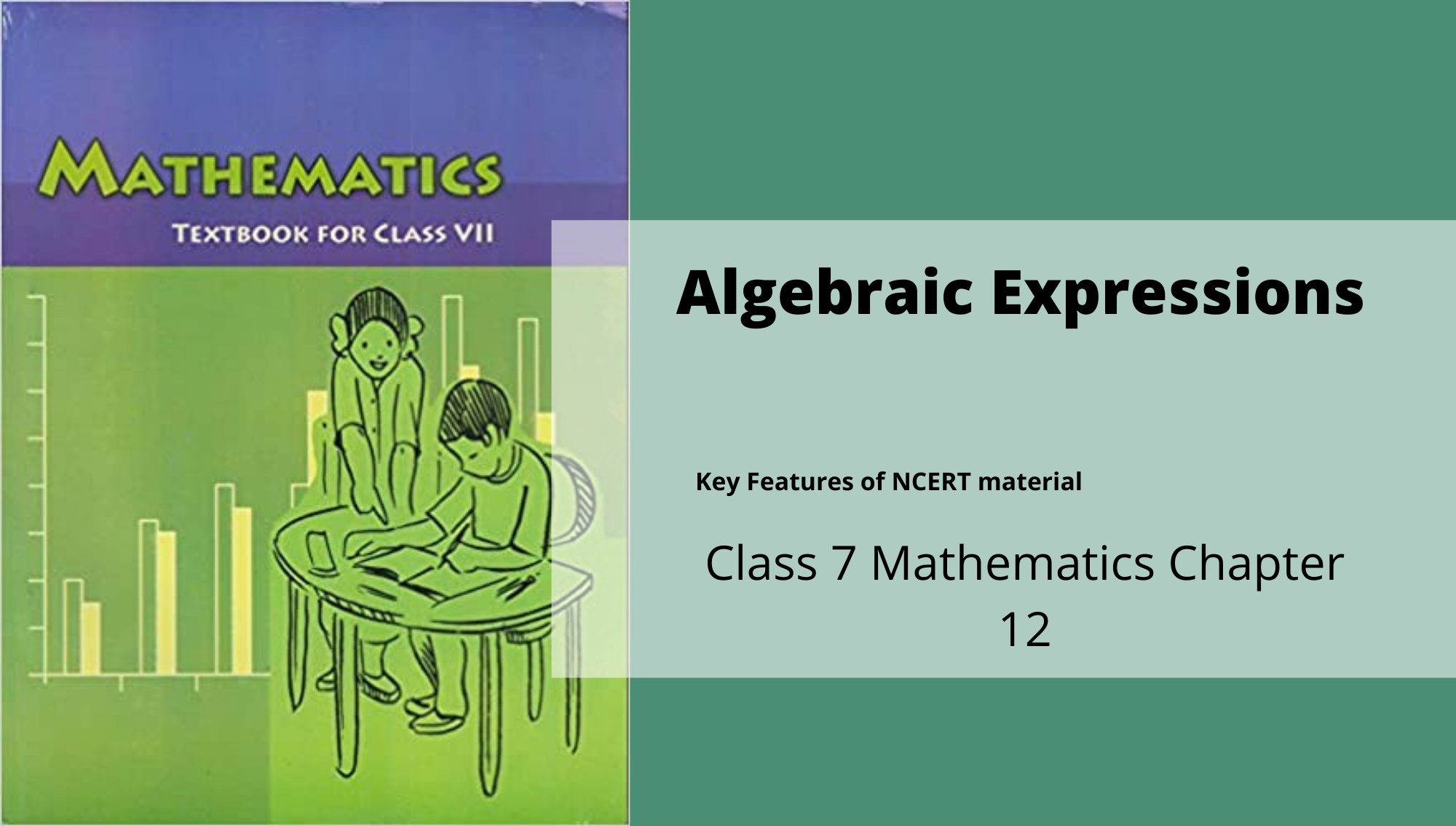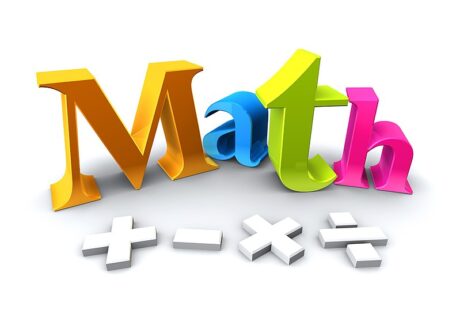Algebraic Expressions: Maths Class 7 Chapter-12

Key Features of NCERT Material for Class 7 Maths Chapter 12 – Algebraic Expressions
Quick revision notes
In Chapter 11 of Class 7 NCERT book: you must have learned about perimeter and area. In chapter 12: Algebraic Expressions you will learn about various forms of Algebraic Expressions
Algebraic Expressions
An Algebraic Expression is the combination of constant and variables. We use the operations like addition, subtraction etc to form an algebraic expression.
Variable
A variable does not have a fixed value .it can be varied. It is represented by letters like a, y, p m etc.
Constant
A constant has a fixed value. Any number without a variable is a constant.
Terms
To form an expression we use constant and variables and separate them using the operations like addition, subtraction etc. these parts of expressions which we separate using operations are called Terms.
Factors of a Term
Every term is the product of its factors. As in the above expression, the term 4x is the product of 4 and x. So 4 and x are the factors of that term.
How are Expressions Formed?
A variable can take various values. It is denoted by letters x, y, l, m, , etc. A constant has a fixed value. Algebraic expressions are formed by combining variables and constants through the operations of addition, subtraction, multiplication, and division.
Terms of an Expression
The parts of an expression which are formed separately first and then added are called terms. A term is a product of its factors. The numerical factor of a term is called the numerical coefficient or simply the coefficient of the term. When the coefficient of a term is +1, it is usually omitted.
Like and Unlike Terms
Terms having the same algebraic factors are called like terms while terms having different algebraic factors are called, unlike terms.
To decide whether the given terms are like or unlike terms, we follow the following simple steps:
- Ignore the numerical coefficients. Concentrate on the algebraic part of the terms.
- Check whether the variables in the terms are the same or not.
- Next, check whether the powers of each variable in the terms are same or not.
Note that in deciding like terms (i) the numerical coefficients of the terms and (ii) the order in which the variables are multiplied in the terms do not matter.
Addition and Subtraction of Like Terms
The sum (or difference) of two like terms is a like term with a coefficient equal to the sum (or difference) or the coefficients of the two like terms.
Addition and Subtracting General Algebraic Expressions
When we add two algebraic expressions, the like terms are added; the unlike terms are left as they are.
Finding the Value of an Expression
The value of an algebraic expression depends on the values of the variables forming the expression. We need to evaluate an algebraic expression when we wish to check whether a particular value of a variable satisfies a given equation or not. Also, we find values of expressions, when we use formulae from geometry and from everyday mathematics.
Using Algebraic Expressions-Formulas and Rules
Perimeter Formulas
The perimeter of an equilateral triangle = 3l, where l is the length of the side of the equilateral triangle.
The perimeter of a square = 4l, where l is the length of the side of the square.
The perimeter of a regular pentagon = 5l, where l is the length of the side of the Pentagon, etc.
Area Formulas
Area of a square = l2, where l is the side of the square.
Area of a rectangle = l × b, where l and b are respectively length and the breadth of the rectangle.
Area of triangle = , where b is the base of the triangle and h is the height of the triangle.
Rules for Number Patterns
1. If a natural number is denoted by n, its successor is (n + 1).
2. If a natural number is denoted by n, 2n is an even number and (2n + 1) is an odd number.
The general (nth) term of a number pattern (or a sequence) is an expression in n.
Expressions are made up of terms. Terms are added to make an expression.
For example, the addition of the terms 4xy and 7 gives the expression 4xy + 7.
Term is the product of factors. Factors may be numerical as well as algebraic.
For example, the term 4xy in the expression 4xy + 7 is a product of factors x, y and 4.
Factors containing variables are said to be algebraic factors.
The coefficient is the numerical factor is the term.
For example, in the terms 5x and 6y, 5 and 6 are coefficients respectively.
Any expression with one or more terms is called a polynomial.
e.g. 5x, 5x + 7, 5×2 + 2xy + 8, etc.
One – term expression is called monomial.
e.g. 2x, 5xy, 8y, etc.
Two – term expression is called binomial.
e.g. 6x – 5y, 2xy + 7, 8y + 3, etc.
Three – term expression is called trinomial.
e.g. 4×2 + 7x + 3, 2x + 3y + 5, etc.
When terms have the same algebraic factors, they are called like terms.
e.g. 5xy, 2xy, -3xy, etc.
When terms have different algebraic factors, they are called, unlike terms.
e.g. 2×2, -2xy, 4y2, etc.
The sum of two or more like terms is a like term with a numerical coefficient equal to the sum of the numerical coefficients of all the like terms.
e.g. 3x + 4x = (3 × x) + (4 × x) = (3 + 4) × x = 7 × x = 7x
The difference between two like terms is a like term with a numerical coefficient equal to the difference between the numerical coefficients of the two like terms.
e.g. 11ab – 5ab = (11 – 5)ab = 6ab.
Unlike terms cannot be added or subtracted the way like terms are added or subtracted.
To find the value of an expression, we substitute the values of the variables in the expression and then simplify.
e.g. For x = 2,
4x – 3 = 4 × 2 – 3 = 8 – 3 = 5.
Rules and formulas in mathematics are written in general form using algebraic expressions:
(a) Area of rectangle = l × b
(b) The nth term of the number pattern 11, 21, 31, 41, …….. is (10n + 1).


